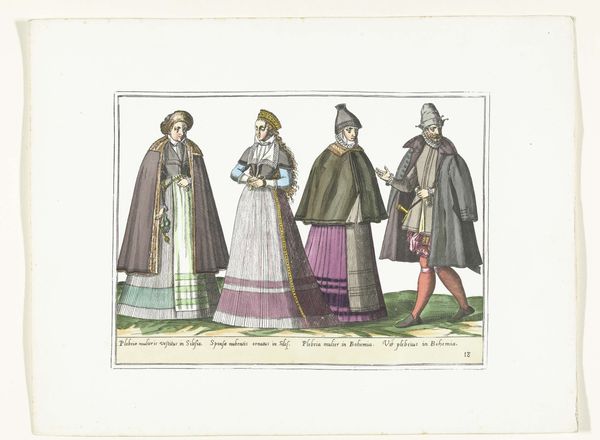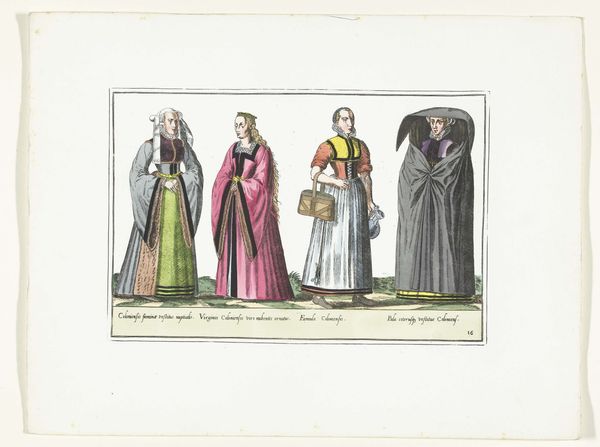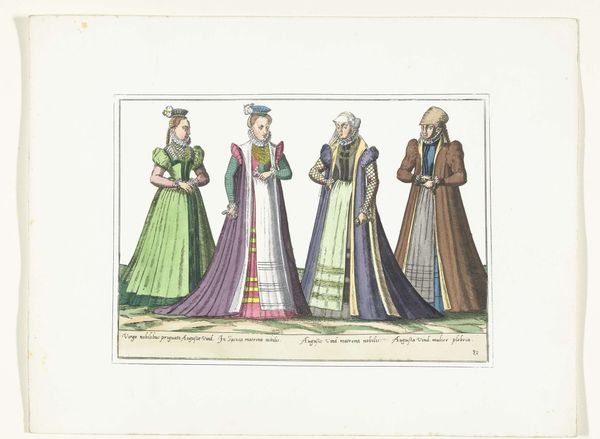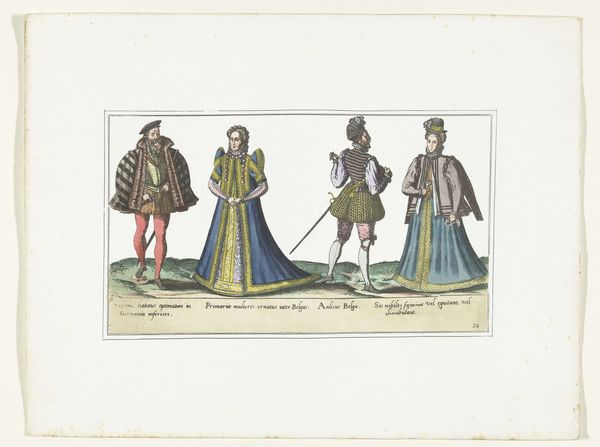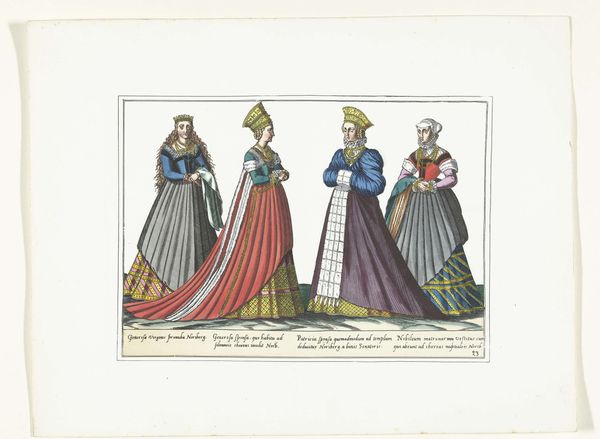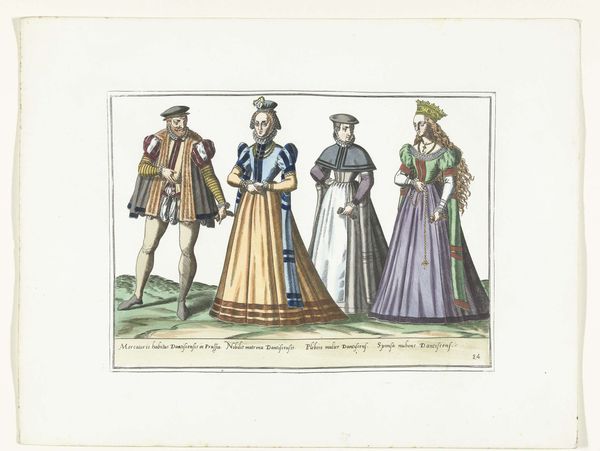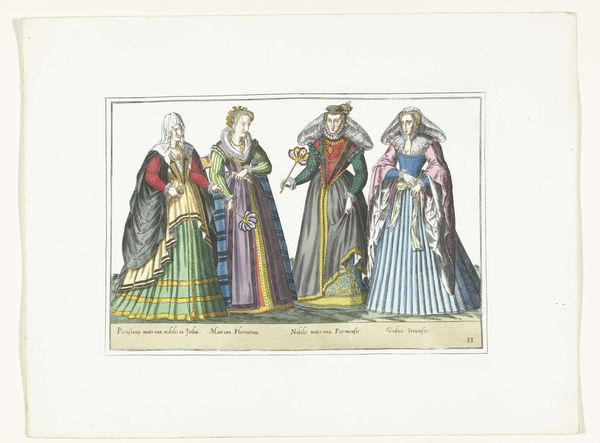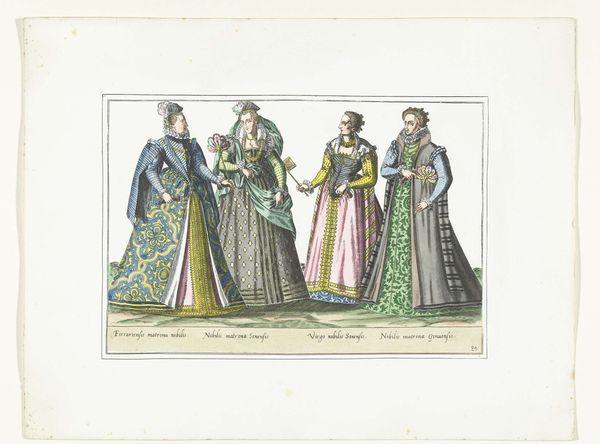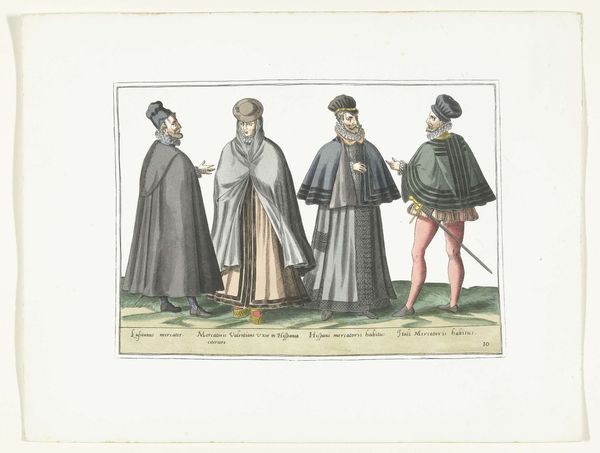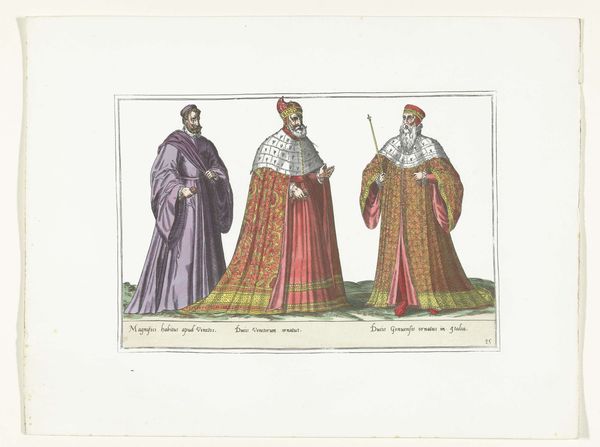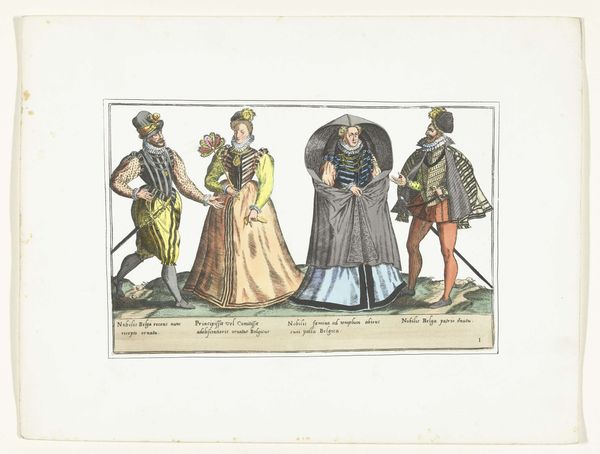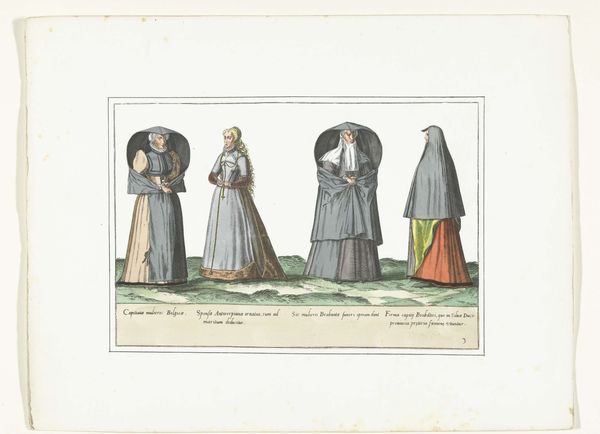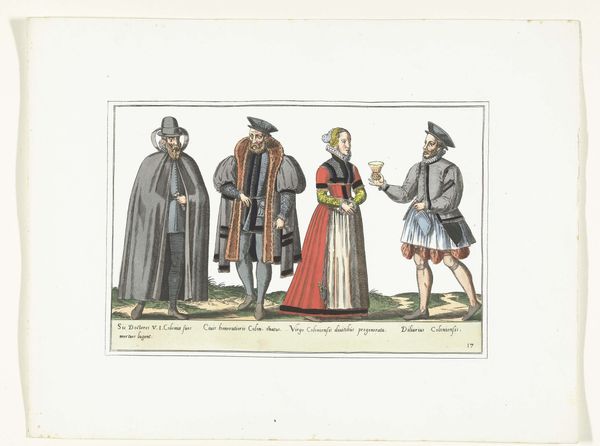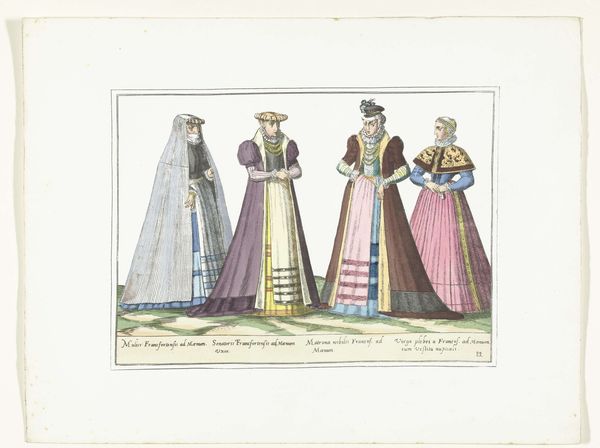
Drie vrouwen en een man gekleed volgens de Duitse mode, ca. 1580 1872 - 1875
0:00
0:00
anonymous
Rijksmuseum
drawing, print, engraving
#
portrait
#
drawing
# print
#
traditional media
#
figuration
#
11_renaissance
#
group-portraits
#
sketchbook drawing
#
history-painting
#
engraving
Dimensions: height 274 mm, width 360 mm
Copyright: Rijks Museum: Open Domain
Curator: It's hard to miss the sheer variety of textures in this piece; everything from the woolens to silks seems painstakingly rendered. We’re looking at “Drie vrouwen en een man gekleed volgens de Duitse mode, ca. 1580,” made sometime between 1872 and 1875. It is currently held in the collection of the Rijksmuseum. Editor: They certainly have a stoic elegance about them, almost doll-like in their stillness. Is this a commentary on the rigidity of social roles in 16th century Germany, perhaps? Curator: Possibly. Let’s remember this work is likely an engraving. Note the fineness of the lines and how much information is conveyed. There is an anonymous hand creating a document meant to serve some purpose – likely to circulate ideas of class. These fabrics and their tailoring involved substantial labor. We are considering who benefits from these material choices. Editor: Precisely! Think of the sumptuary laws of the time – what you wore broadcasted your status and controlled access to resources and social mobility. Even something as simple as the length of a train or the type of fabric was heavily regulated. One needs to examine how it all contributes to maintaining gendered, patriarchal societal hierarchies. Curator: You know, what strikes me is the seeming artifice of it all. This engraving attempts to freeze these figures in time, solidifying the aspirational possibilities through accessing consumer goods, but we know it's just a snapshot and a controlled presentation, not an honest one. What power does owning one's image convey? And more specifically, owning an idealized image? Editor: It is interesting to me that the artist, while anonymous, chose to depict not just the nobility, but specific signifiers of the burgeoning merchant class through access to high quality textiles and expert construction, indicating a shifting power dynamic, potentially highlighting growing social mobility... or perhaps satirizing it. The composition suggests something of an allegory—a silent drama frozen in print. Curator: Right. It’s interesting to consider what this piece lacks—namely, individual likeness. We see types of figures represented; not actual, recognizable people. Editor: It reminds us that art doesn't exist in a vacuum; these fashion plates reflected and reinforced societal norms while potentially questioning or subverting expectations. They speak to an ongoing power play. Curator: So true. These sartorial choices—they are all deliberate choices made on the parts of the maker, the wearers and their place in economy. Thank you for making me see the significance of its broader social context, Editor. Editor: Thank you, Curator, for shining a light on the details of craftsmanship and production. Together, these details show the broader implications of the portrait we find so intriguing.
Comments
No comments
Be the first to comment and join the conversation on the ultimate creative platform.
